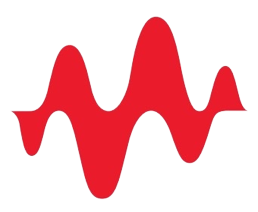Battling Your Power and Data Transmission Demands

As an industry, we have approached the increased power consumption and data transmission requirements differently depending on the application of our devices and peripherals. Wouldn’t it be great to have a simplified solution that everyone could use?
Do your designs invariably require more components as you struggle to maintain an elegant design? As we seek to expand the capabilities of our devices, the arduous task of keeping our board designs at manageable sizes grows with our components. The progression of consumer devices towards smaller form factors has increased the strain on designers to maximize board real estate instead of allowing for a focus on functionality. And as an industry, we have approached the increased power consumption and data transmission requirements differently depending on the application of our devices and peripherals. Wouldn’t it be great to have a simplified solution that everyone could use?
Evolution
While USB Type-A, Type-B, and other proprietary cables have provided for our data transmission needs for over a quarter century, they have failed to take into account all of our interface needs. We use a wide array of cables to meet all of our requirements for power delivery, display outputs, and data transmission. These methods are scattered throughout every consumer product, however transitioning to a new universal standard will take time.
There are many wireless alternatives, but they are not yet practical for the current state of the industry. Wireless data transmission, display, and power is intermittent and requires constant communication between devices. It would be great if we could do this all wirelessly, but these wireless methods will take years to perfect and require further development. We need a method that provides fast data transfer speeds, display outputs, and power while being easy enough to use that it can be utilized by all companies for development.
USB Versions
|
USB Version |
Maximum Data Transmission Speed |
Maximum Voltage/Current Output |
|---|---|---|
|
USB 1.1 |
12Mbps |
2.5V, 500mA |
|
USB 2.0 |
480Mbps |
2.5V, 1.8A |
|
USB 3.0 |
5Gbps |
5V, 1.8A |
|
USB 3.1 |
10Gbps |
20V, 5A |
The USB standard has progressed over the years through the implementation of versions, enabling each version with faster data transmission speeds. USB Type-A and Type-B have used these versions to upgrade themselves to better suit technological needs. However, USB Version 3.1 can’t reach its maximum potential with USB Type-A and USB Type-B connections.
Simplified Connectivity: USB Type-C
The USB Type-C connector allows full implementation of USB Version 3.1 and USB Power Delivery (USB PD) specifications while providing the benefits of data transmission, display outputs, and power. This connector will eliminate the need for proprietary USB connectors and replace USB Type-A and Type-B connectors eventually. Adapters and converters can be used to achieve backward compatibility with older ports, such as the traditional USB Type-A ports. Future Type-C cables will have type-C connectors on both ends providing an omnidirectional design.
The Type-C connectors provide a solution powerful enough for large devices, such as laptops, and also small enough (approximately 8.4mm by 2.6mm) for utilization in portable devices. The cables will be able to supply 15 Watts under normal operation and 5 amps at 20 volts to power devices when used as outlined by current USB PD specifications. Additionally, the cables will provide a maximum data transmission speed of 10 Gbps utilizing USB Version 3.1.
USB Type-C Connector
The USB Type-C connectors are structured to accommodate future updates to USB versions and USB PD specifications ensuring a future proof design. Additionally, the type-C connector has been developed to connect to either host or peripheral devices removing the need for the type-A interface. The pin setup within each connector also makes the connector reversible so that you never have to deal with plugging your cables in “the right way.”
Utilizing USB type-C will allow devices to transmit data and receive power simultaneously from a single port, allowing for external hard drives, displays, and any device that can operate under the power delivery specifications. The Type-C USB also provides bi-directional power allowing the host to charge a peripheral or vice versa if the need arises.
Dangerous Delivery
While the USB Type-C connectors can leverage USB PD specifications to supply excellent power delivery, there are issues with this connector as well. The old coinage, “with great power comes great responsibility” definitely applies here. Many cables are being produced to capitalize on the new market for USB Type-C connectors and some of these cables do not meet the full requirements for power delivery.
It is important to design our products for general use as opposed to a specific use cases. There are devices using USB Type-C ports that ship with cables that operate correctly for their device, but would harm another device. It can be difficult when designing to not only taking into account the needs of your product, but all other systems that your device may be interacting with. Designing your products for sustainability and interconnectivity is a responsibility that shouldn’t be taken lightly and careful study of the USB Specification should precede the development of your designs.
Designing a high-speed board layout with USB Type-C or USB 3.0? Find out how to automate your high-speed design setup with USB 3.0 support in Altium Designer®.












